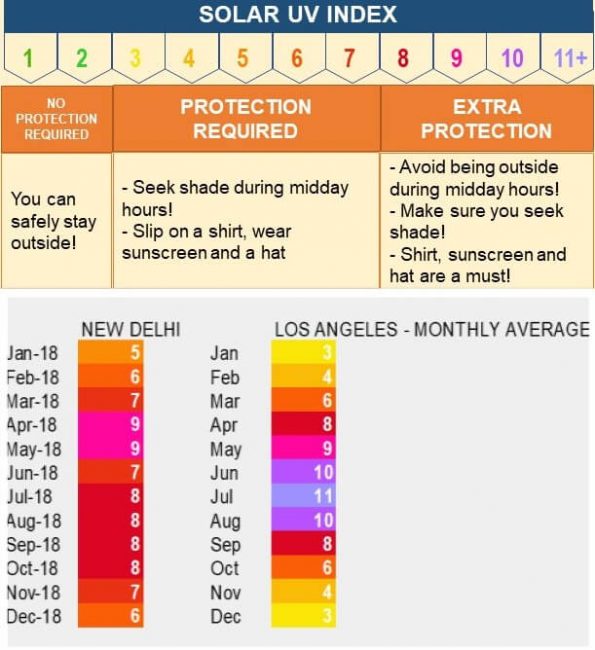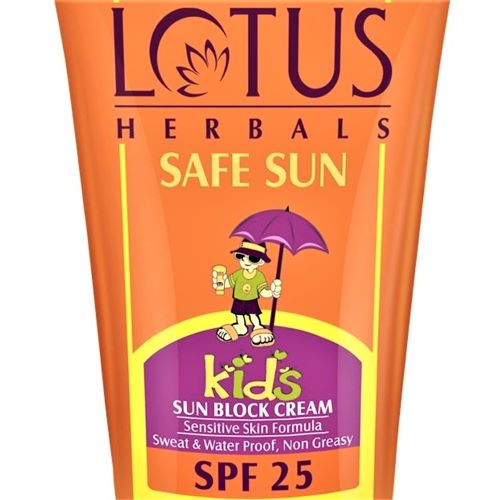My view: Give it a miss
Retail price: Rs 335 for 100g or (USD 4.84 for 100g)
Please also see Infant And Kids: A Short Guide To Sunscreen
The product contains parabens and I would “give it a miss.” (Personally, I find its easier to look for bad ingredients, like parabens and oxybenzone, first before going through ALL of David Suzuki’s dirty dozen chemical list).
My other observations are:
- Given the intensity of UVR in India, SPF 25 provides insufficient protection
- It contains one UVA/UVB filter – Titanium Dioxide – which is essentially an unreactive and stable ingredient.
For the more technically inclined amongst you, please keep reading. The rest of you – see you later!
Ingredients: Water, Isopropyl Myristate, Light Liquid Paraffin, Hydrogenated Polyisobutylene, Aluminium Starch Octenylsuccinate, Glycerin, PEG 30 Dipolyhydroxystearate, Tiatanium Dioxide, Aloe Barbadensis Leaf Extract, Camellia Sinensis (Thaeceae) Leaf Extract, Calendula (Officinalais) Flower Extract, Cyclopentasiloxane, Magnesium Sulphate, 2-Phenoxyethanol, Methyl Paraben, Propyl Paraben, Fragrance
Note: All spelling errors are as per the label.
Filters
“Filters” protect against damage caused by UV radiation. UVA rays penetrate our skin deeper and cause breakdown of collagen in our skin. Collagen is what gives skin its structure and resilience. Therefore, UVA causes longer-term structural damage to our skin.
UVA filters protect against the damage caused by UVA radiation, which in a nutshell is photo-damage (wrinkles, hyper-pigmentation and loss of skin elasticity). UVB filters protect mainly against UVB radiation, namely reddening of the skin (erythema), sunburn and skin-cancer. UVB/UVA filters combine the function of UVA and UVB filters.
- UVA filters: None
- UVB filters: None
- UVA/UVB filter: Titanium Dioxide (8th ingredient)
My thoughts
1) It contains parabens
This product contains Methyl Paraben and Propyl Paraben.
Parabens are cheap and effective preservatives that manufacturers love. The problem with parabens is that they are endocrine system disruptors – they act as estrogen mimickers and in a study in the USA, traces of parabens were found in most urine samples of both genders, irrespective of ethnicity. Parabens are easily absorbed into the skin, so if your face products (toner, serum, cream, sun-protection), soap(s), body lotion and parfum all contain parabens, then that’s multiple applications per day. Also, as you constantly reapply sunscreen throughout the day, you are also repeatedly applying parabens.
For the above reason, you should avoid paraben containing products. For more on parabens see Chemicals to Avoid – Parabens.
2) SPF 25 provides insufficient protection against intensity of UVR
The intensity of UVR in India (as measured by the Solar UV Index) is very high. Using New Delhi (see image below) as a proxy, everyone should be wearing sun protection 24/7, 365 days a year.
Also, I think everyone should be wearing at least SPF 30, as studies (consistently) show that people use an insufficient quantity of sunscreen to achieve the protection promised by the SPF on the package. Therefore, a higher SPF is always better than a lower SPF.

With children, there skin needs MORE protection and SPF 25 is wholly inappropriate.
3) Labelling is wholly inappropriate
The name of the product is “sun block”. A sun block implies that the product completely blocks UVR (ultra violet radiation) or provides “complete” or “total” protection. Such a (miraculous) sunscreen does not exist and in the EU – where there is specific sunscreen regulation – manufacturers cannot make such claims.
In India, there is no such equivalent regulation/rules and manufacturers are free to make such claims. Its upto us to be vigilant as consumers :0) and not be hoodwinked by such labelling!
See also: Top 5 sunscreen recommendations, Do You Understand The Gibberish On Sunscreen Labels?
Sources and uses: US20170326062A1 (US Patent application pending), US9956163B2 (Having previously been published, pre-grant publication); https://www.federalregister.gov/documents/2019/02/26/2019-03019/sunscreen-drug-products-for-over-the-counter-human-use; Ceresole, R., Y.K. Han, M.A. Rosasco, et al., “Drug-Excipient Compatibility Studies in Binary Mixtures of Avobenzone,” Journal of Cosmetic Science, vol. 64(5), pp. 317-328, 2013. ; Nash, J.F., and P.R. Tanner, “Relevance of UV Filter/Sunscreen Product Photostability to Human Safety,” Photodermatology, Photoimmunology and Photomedicine, vol. 30(2-3), pp. 88-95, 2014 ; Wendy E Roberts, Lily I Jiang, and James H Herndon, Jr, “Facial primer provides immediate and long-term improvements in mild-to-moderate facial hyperpigmentation and fine lines associated with photoaging” Clin Cosmet Investig Dermatol. 2015; 8: 471–477.
